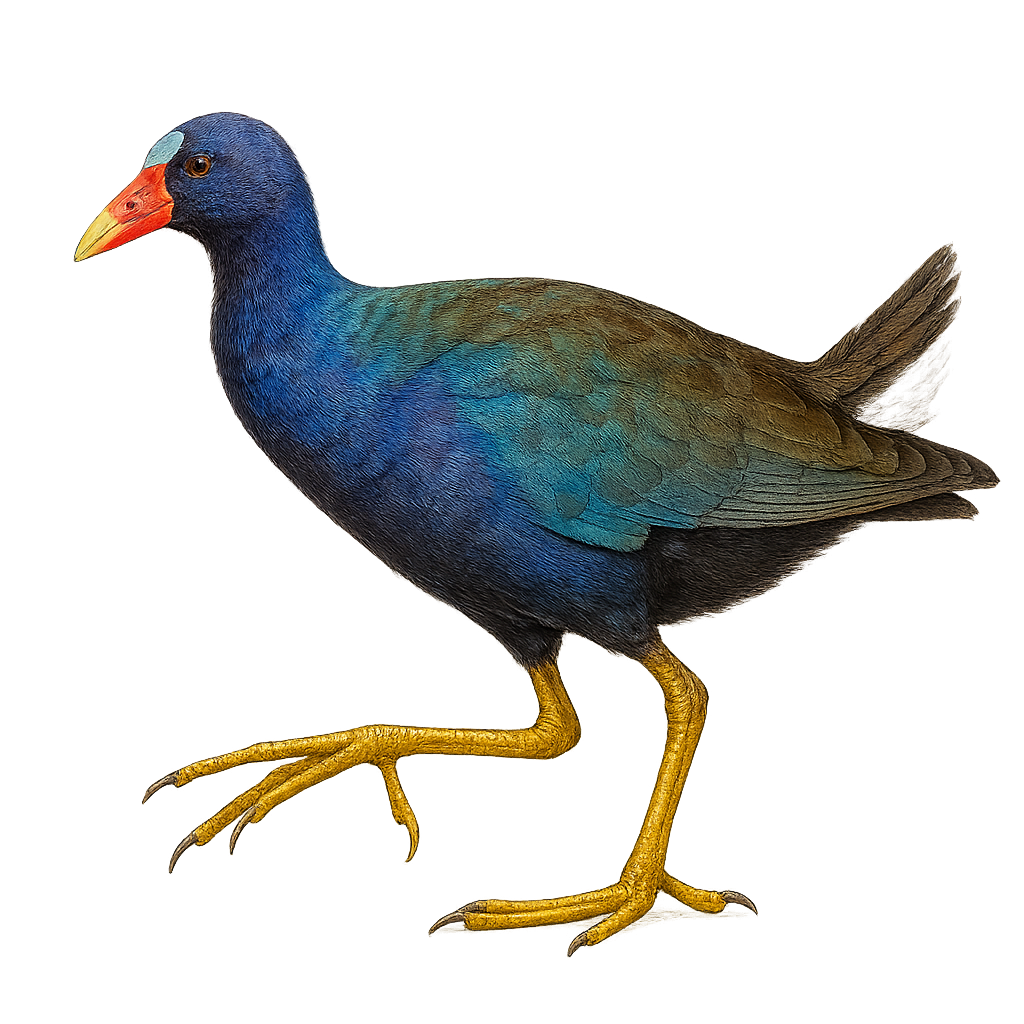Your wildlife photography guide.
Explore the purple gallinule in detail, study its behavior, prepare your shots.
Where to observe and photograph the purple gallinule in the wild
Learn where and when to spot the purple gallinule in the wild, how to identify the species based on distinctive features, and what natural environments it inhabits. The WildlifePhotographer app offers tailored photography tips that reflect the purple gallinule’s behavior, helping you capture better wildlife images. Explore the full species profile for key information including description, habitat, active periods, and approach techniques.
Purple Gallinule
Scientific name: Porphyrio martinica

IUCN Status: Least Concern
Family: RALLIDAE
Group: Birds
Sensitivity to human approach: Suspicious
Minimum approach distance: 10 m
Courtship display: April to June
Incubation: 18-21 jours
Hatchings: April to July
Habitat:
Marshes, ponds, wetlands
Activity period :
Primarily active during the day, with peak activity in the morning and late afternoon.
Identification and description:
The Purple Gallinule, or Porphyrio martinica, is a striking waterbird known for its vivid colors. It features a bright blue-purple plumage, a red bill with a yellow tip, and long yellow legs. This species is primarily found in marshes, ponds, and wetlands of Central and South America, as well as the southern United States. It is known for its ability to walk on floating vegetation due to its long toes. The Purple Gallinule is a social bird, often seen in small groups. It feeds mainly on aquatic plants, insects, and small invertebrates. Its breeding period varies by region but is generally active during the warmer months.
Recommended lens:
400mm – adjust based on distance, desired framing (portrait or habitat), and approach conditions.
Photography tips:
To photograph the Purple Gallinule, aim for early morning or late afternoon to take advantage of soft light. Use a telephoto lens of 400mm or more to capture details without disturbing the bird. Be patient and remain discreet, as this bird can be suspicious. Look for areas with floating vegetation where it likes to move. A tripod can be helpful to stabilize your camera, especially if using a long focal length.
The WildlifePhotographer App is coming soon!
Be the first to explore the best nature spots, track rutting seasons, log your observations, and observe more wildlife.
Already 1 432 wildlife lovers subscribed worldwide

